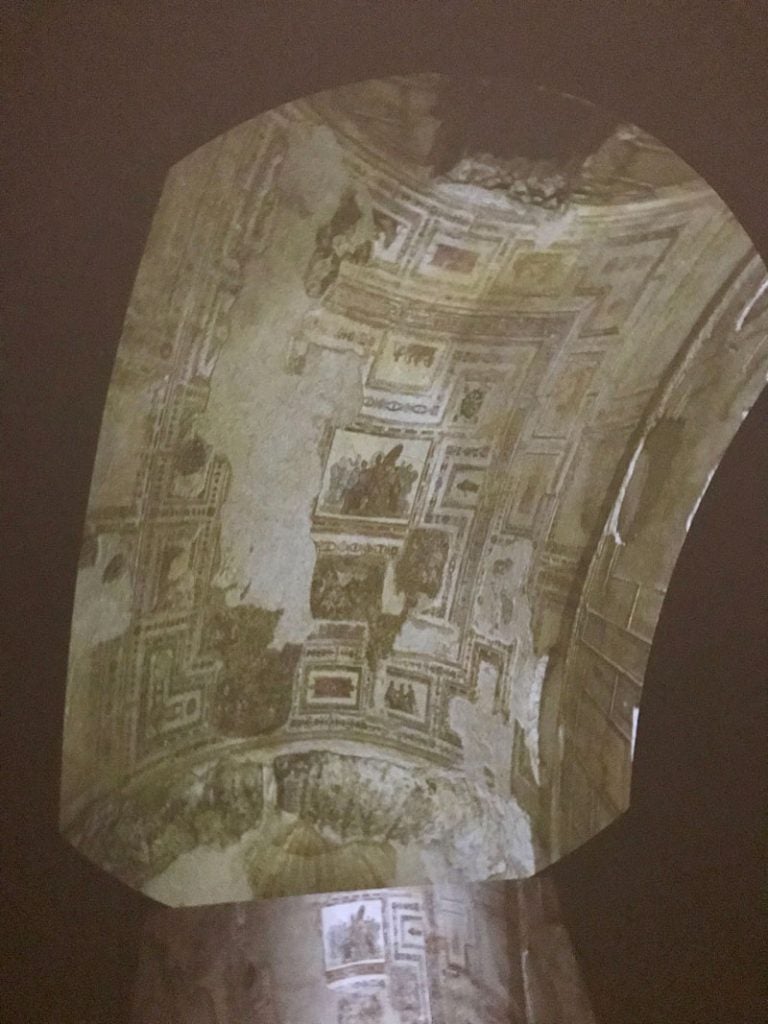Leslie Schramer, Editor
A few weeks ago I had the good fortune to be invited by Professor Nicola Barham, assistant curator of ancient art at the Kelsey, to sit in on her class HISTART 689 – Special Topics in History of Art, Section 004, Ancient Roman Painting: Image and Abstraction. This was very exciting to me because A) it’s a super cool topic (who doesn’t love a good Roman fresco?); B) it gave me a reason to leave the confines of my office and look at something other than a computer screen for a while; but mostly C), this was no ordinary lecture. Nicola, in an inspired move, had arranged with the U-M Museum of Natural History to show her slides of gorgeous Roman wall and ceiling paintings … wait for it … on the Planetarium dome.
It did not disappoint.
I’m not a great photographer under the best of circumstances, and it was dark, so these images don’t do the experience any kind of justice:

The new Museum of Natural History 
Professor Barham in the Planetarium 
Nero’s Domus Aurea 
Professor Barham discussing the Eagle Room of the Domus Aurea
We traveled to Pompeii and Herculaneum to see a variety of domestic frescoes. We spent time in Rome at the Domus Aurea, Emperor Nero’s (in)famous pleasure palace. At Ostia, we gazed at the beautiful artistry of the House of the Painted Vaults. In Turkey, we viewed the Terraced Houses at Ephesus. We visited many sites, and each one was a feast for the eyes.
Not being actually enrolled in the class, I had the luxury of sitting back (those Planetarium seats recline, you know) and just enjoying the show. It was almost as good as actually being there. Better, perhaps, in that we didn’t have to use our elbows as weapons against other tourists, nor did we get vertigo or sore necks from spinning and straining to see the paintings overhead.
I had to leave at the break, but Nicola and her students continued to travel around the Roman Empire in their comfy chairs, clicking through image after beautiful image.
Many thanks to Professor Barham for inviting me to share in this delightful experience. I hope this idea catches on and that more U-M professors will take advantage of the Planetarium as a teaching resource. It wouldn’t work for all classes, of course (I certainly wouldn’t have accepted a similar invitation from a professor in the School of Dentistry), but I can think of many subjects that could put a planetarium dome to good use.


